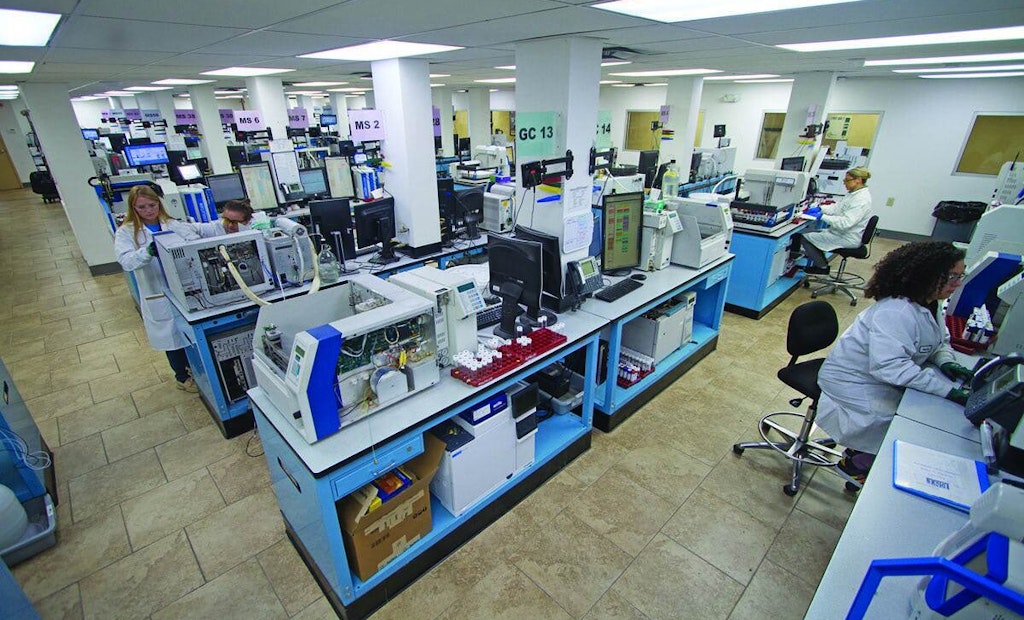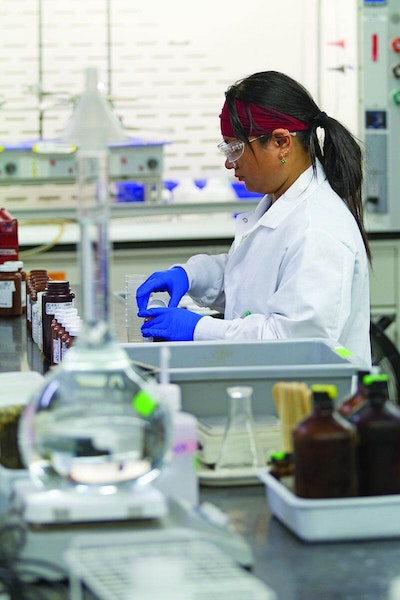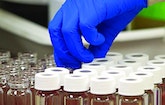
Commercial laboratories can offer test methods designed to meet a wastewater treatment facility’s unique needs.
Interested in Laboratory?
Get Laboratory articles, news and videos right in your inbox! Sign up now.
Laboratory + Get AlertsDrinking water professionals are familiar with PFAS, but in many cases these synthetic chemicals have not been on wastewater treatment operators’ radar.
That may change in the near future. The U.S. EPA is set to propose the first enforceable limits on PFAS in drinking water, and that has potential to change daily life for many operators of wastewater treatment plants across the country.
PFAS are a diverse group of synthetic compounds used in multiple products for their inherent properties, such as a resistance to heat, water and oil. For decades, they have been used to produce industrial and consumer products such as carpeting, clothing, upholstery, food packaging, cosmetics, fire-fighting foams and metal plating.
Today as many as 5,000 to 12,000 compounds can be classified as PFAS. These chemicals bioaccumulate, meaning they build up in the blood and tissue of organisms. Since at least the 1980s, research has linked two types of common PFAS compounds — PFOS and PFOA — to health issues including chronic kidney disease, thyroid issues and some cancers.
Toward enforcement
The EPA and others continue to research the thousands of widely used PFAS compounds, but most of the EPA’s recent regulatory efforts have focused on PFOA and PFOS.
Last year, the EPA issued revised health advisories for PFOA and PFOS, lowering the lifetime dose deemed safe from 70 parts per trillion to 0.004 ppt for PFOA and 0.02 ppt for PFOS. These are interim advisories, so they are subject to change.
However, by issuing advisories this low, the EPA is essentially saying any detectable PFOA or PFOS in drinking water is unsafe. The agency also plans to issue the first Maximum Contaminant Levels — enforceable limits on PFOA and PFOS in drinking water.
The problem of PFAS in the drinking water will be brought to a head by another EPA program, the Fifth Unregulated Contaminant Monitoring Rule. This program requires public water systems serving 3,300 people or more, plus 800 randomly selected smaller systems, to test for 29 PFAS compounds, including PFOA and PFOS, in 2023.
Coming from where?
Communities that detect PFOA and PFOS in their drinking water will need to look for a source, especially if the MCLs have been published. That’s where wastewater treatment operators enter the picture.
To understand the role of wastewater treatment, it helps to consider inputs and outputs. PFAS in influent can come from a variety of sources, most commonly discharges from industries that produce or use PFAS. Chemical companies are the most obvious source, but PFAS are also used in industries such as plastics, synthetic fibers, textiles, metal finishing, electroplating, electrical components, construction, leather processing and more.
Runoff is another pathway for PFAS to enter wastewater treatment processes, especially if a community has combined storm and sanitary sewers. Aqueous film-forming foam, used to fight Class B chemical fires, often contains PFAS. Drainage from sites where this foam has been used can reach the treatment plant by way of the sewer system. Landfill leachate, typically sent to treatment plants, also can contain PFAS.
Traditional wastewater treatment does not remove PFAS. In fact, it can convert a class of compounds called PFAS precursors into actual PFAS. This is why operators may see higher levels of PFAS in effluent than in influent. This can lead to PFAS cycling back into the drinking water supply.
For example, when wastewater effluent containing PFAS is discharged to waterways, it can contaminate the local drinking water supply. If biosolids containing PFAS are applied to farmland, the compounds can seep into surface and groundwater.
Some municipalities are installing filtration systems using media such as granular activated carbon to remove PFAS. While this method may be effective, filters can’t destroy but only capture the chemicals. Proper disposal of the filters then becomes a concern.
Testing for PFAS
Wastewater treatment operators often ask whether they should test both influent and effluent for PFAS. In general, the answer is yes. Testing influent can help identify the source of PFAS in their system, while effluent testing can determine whether PFAS are continuing to cycle through the system. The EPA’s Effluent Guidelines Program Plan 15 calls for more study into the PFAS in wastewater discharges sent to publicly owned treatment works.
Testing wastewater is a bit more challenging than testing drinking water. For that reason, the EPA-validated methods for drinking water (Methods 537.1 and 533) are not suitable. The EPA is working on several testing methods for use in future regulations designed to monitor and control PFAS in wastewater.
EPA Method 8327: This method recently developed by the EPA is designed for nonpotable water, including surface water, groundwater and wastewater.
EPA Draft Method 1633: This method can quantify 40 PFAS compounds across a wide range of solid and nonpotable aqueous matrices. Once finalized, Method 1633 will likely replace laboratory-specific standard operating procedures as well as state and Department of Defense guidance and methods. It will also play a vital role in EPA efforts to study, monitor and regulate PFAS in nearly all matrices and regulatory programs except drinking water. In early 2022, the EPA issued a memo making Draft Method 1633 the required method for NPDES permitting.
EPA Draft Method 1621/Adsorbable Organic Fluorine: This method is described by the EPA Office of Water as a Screening Method for the Determination of Adsorbable Organic Fluorine in Aqueous Matrices by Combustion Ion Chromatography. As drafted, it can quantify total organic fluorine at the parts-per-billion level in all aqueous matrices. It may also be used to supplement Draft Method 1633 for NPDES permitting.
Total Oxidizable Precursors: This method oxidizes PFAS precursors, turning them into PFAS compounds that can then be measured. The increase in PFAS measured after the TOP Assay oxidation relative to pre-oxidation levels is a maximum estimate of the total concentration of PFAS precursors present in a sample.
A commercial laboratory may offer other test methods designed to meet a treatment facility’s unique needs. One example is low-volume test that measures total organic fluorine in a liquid sample without extraction to a carbon media. Without the need for extraction, this method can deliver more reliable results than other TOF methods. A qualified PFAS lab should be able to help determine which test method is most appropriate for a given project.
This is a rapidly changing landscape. Please visit www.pfas.com for the latest updates.
About the author
Lindsay Boone (lindsay.boone@pacelabs.com) is a technical specialist with PACE Analytical, a company based in Minneapolis that provides a wide range of analytical, testing and scientific services.







